Ash firewood for burning remains a popular heat source, especially during the winter. But do people use it for its excellent firewood properties, or is it because they lack options? Let’s see how it fares below.
What is Ash Firewood?

Fig 1: An Ash tree wood slab
Ash firewood ranks among the best firewood with an average heat of 24.2 million BTUs per wood cord. It also has limited smoke and produces relatively high-quality coals. In addition, it splits when dry, ranking ash for burning among the best go-to woods.
We’ve elucidated the key highlights of ashwood burning. But what are its specifics regarding burn quality? Check out below.
Burn Qualities of Ash Firewood
Heat Production
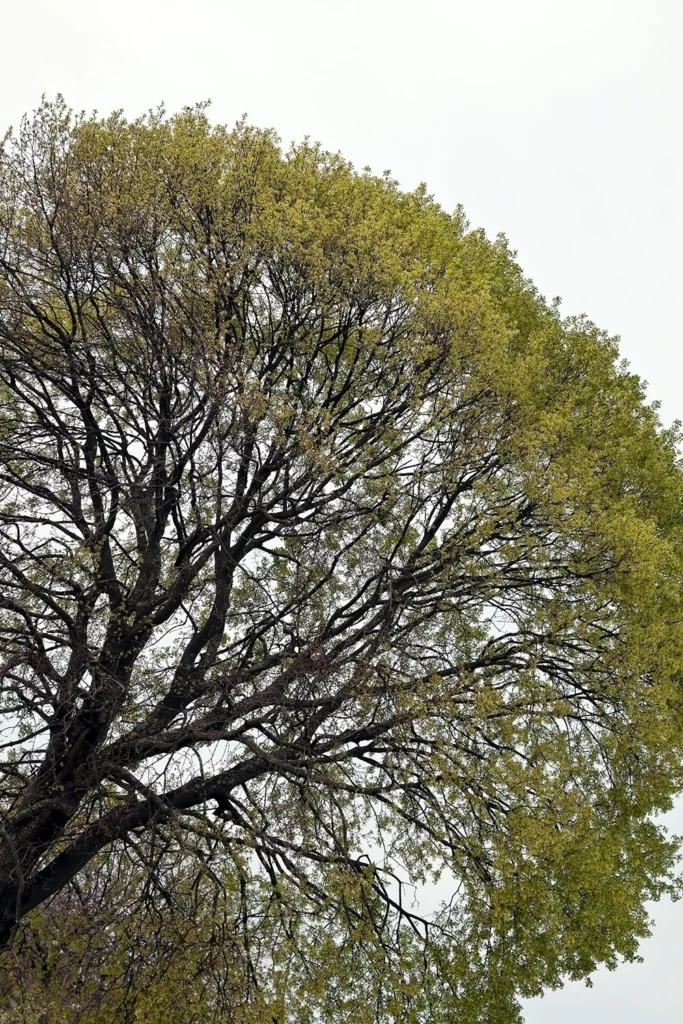
Fig 2: The European Ash Tree
Compared to other woods, we can consider ash firewood heat production to be within the middle or high range. While it doesn’t deliver stable heat output as Hickory or Black Locust, it still ranks among the top firewoods in this parameter.
Check out the table below for an illustration of how various trees’ BTU outputs compares to that of ash wood.
Smoke Production
Ashwood is among the best firewood trees thanks to its low smoke production.
Other trees that are top-ranking in this parameter include Hickory and Oak. On the other hand, trees such as Hard Maple and Pine are heavy smoke producers, while Mulberry gives out moderate smoke.
However, all trees (including top-tier firewood trees like ash, oak, and Hickory) will emit heavy smoke when burned while still wet. Thus, ensure that you have dried your wood properly before use as firewood.
Seasoning Time
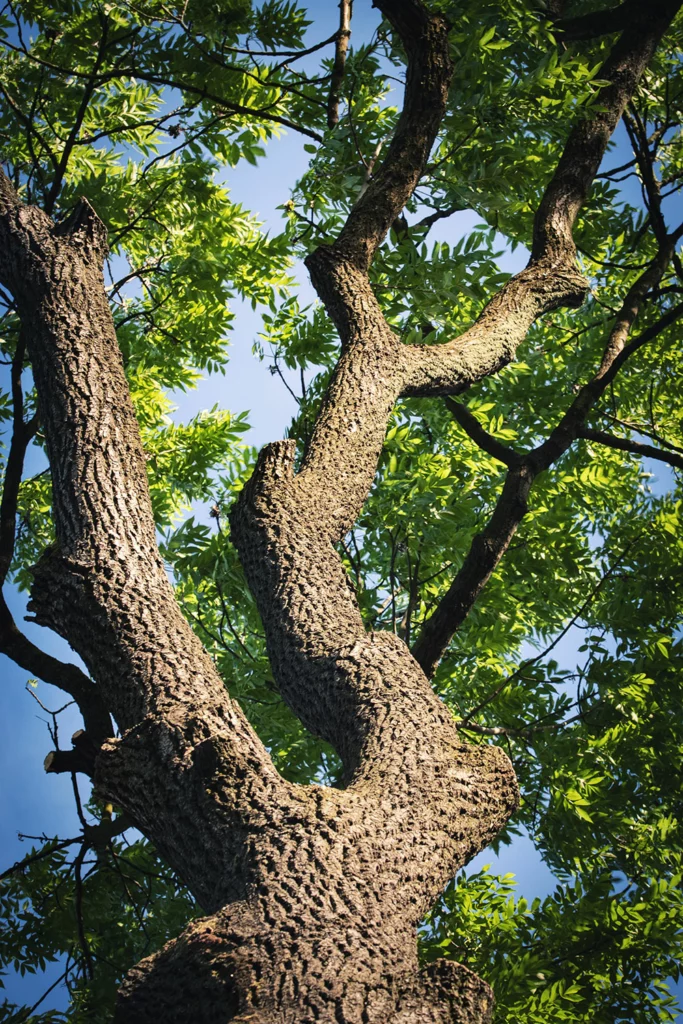
Fig 3: Ash Tree Trunk
Ash belongs to the dense hardwoods category and thus will take quite a long time to dry fully. The seasoning time for Ash for burning is approximately six to 12 months. However, this will vary depending on the prevailing weather and condition of the wood.
For instance, Ash will season faster in Texas than in Oregon as the former has warmer climates. Also, if you have split your wood, it will take a shorter seasoning time than when left to dry as logs.
Burning Smell
Ash does not produce a strong, pungent smell nor gives a sweet odor. So its smell lies between strong and mild, which is quite tolerable. Therefore, if you are looking for an aromatic, near-tangy smell, go for Eastern Red Cedar, Apple, Hickory, or Cherry firewood.
The trees above are also popular in open-fire cooking and BBQ as they add to the flavor of the food.
Creosote Buildup
Ash is low on sap and thus has limited creosote buildup. Creosote is the black tar that builds up in the fireplace’s chimney. It’s synonymous with burning undried wood, although some tree species are renowned for high creosote buildup even while dry.
For instance, sappy firewoods such as pine produce a lot of creosote. Thus, given a choice between Pine and Ash, go for the latter, as it’ll save a lot in chimney maintenance costs.
Splitting
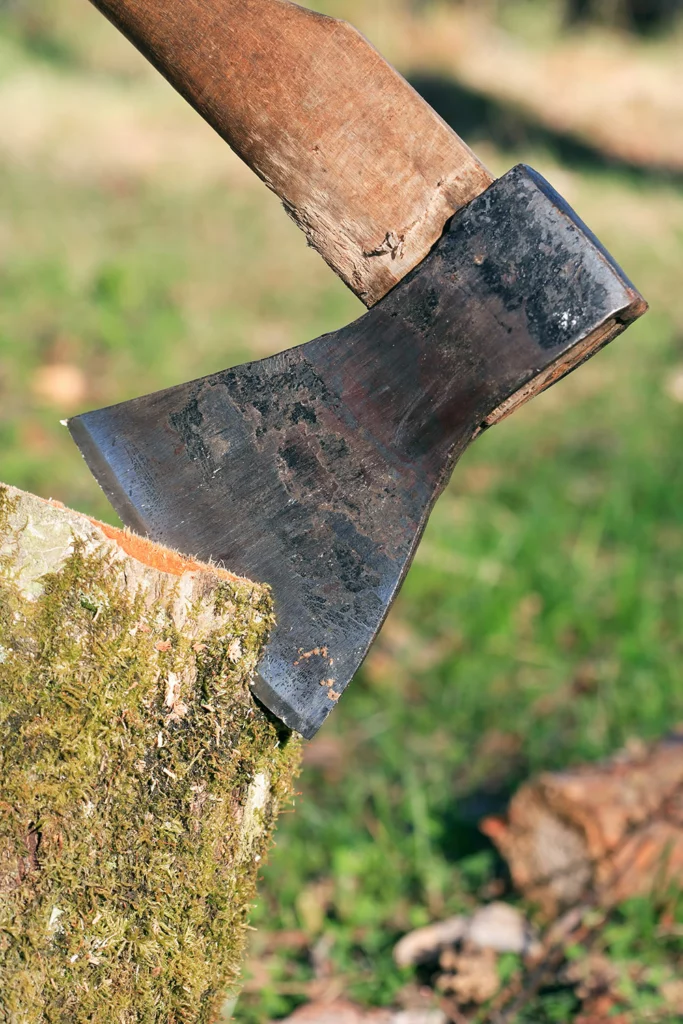
Fig 4: Splitting firewood
Ash is not hard, yet not too easy to split. Ash is relatively more difficult to split than Oak, but this has to do with the relatively large size of Ash. Also, Ash is synonymous with knots, especially many branches that may make a splitting job much harder.
However, that is not a problem, as with a few more flexes of the axe, you’ll easily split it.
Comparing Ash to Other Firewood

Fig 5: Ash firewood has a high heat output
Ash is in the top category of the best firewood trees, and others such as Oak, Hickory, Black Locust, Beech, and Mulberry. The top features of these trees include
- Low smoke production
- High heat output
- Low creosote buildup
- Fast seasoning time
- Low to moderate difficulty in splitting.
Below the above-listed firewood are others that we consider moderately good firewood for heating. They include trees such as Hard Maple, Black Cherry, and Black Walnut. They have some but not all the key features of the best firewood trees.
Lastly, we have others that are poor firewood trees for heating. They include Pine, Sycamore, Birch, Soft Maple, Aspen, and Elm.
Seasoning Ash Before Burning
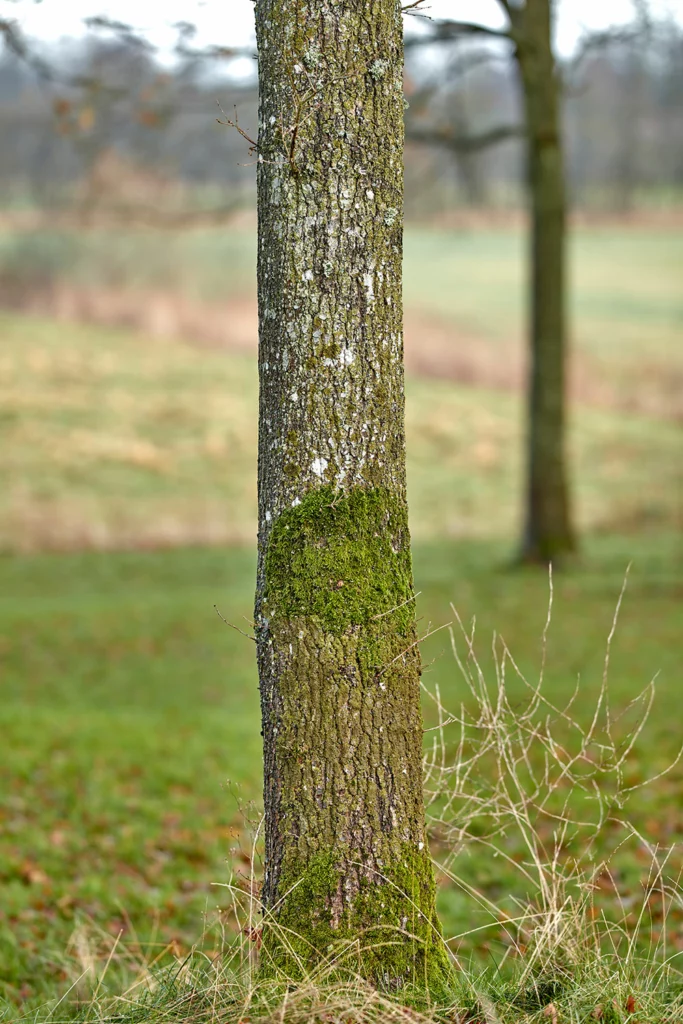
Fig 6: An Ash Tree trunk
Below are the key steps to seasoning Ash for burning
- First, split the firewood into small pieces to encourage faster burning. Split wood has a larger surface area exposed than logs and thus dries faster.
- Also, it helps if you elevate the split wood on some platform, such as one made of perpendicular planks. It improves airflow and hastens the wood drying process.
- Next, carefully stack the wood in an alignment that allows maximum breeze to blow over them. While stacking, ensure to leave some space between the wood rows.
- Lastly, you can cover the wood at night for protection from snow or rain, which would delay the drying process.
How to Identify Ash Firewood?
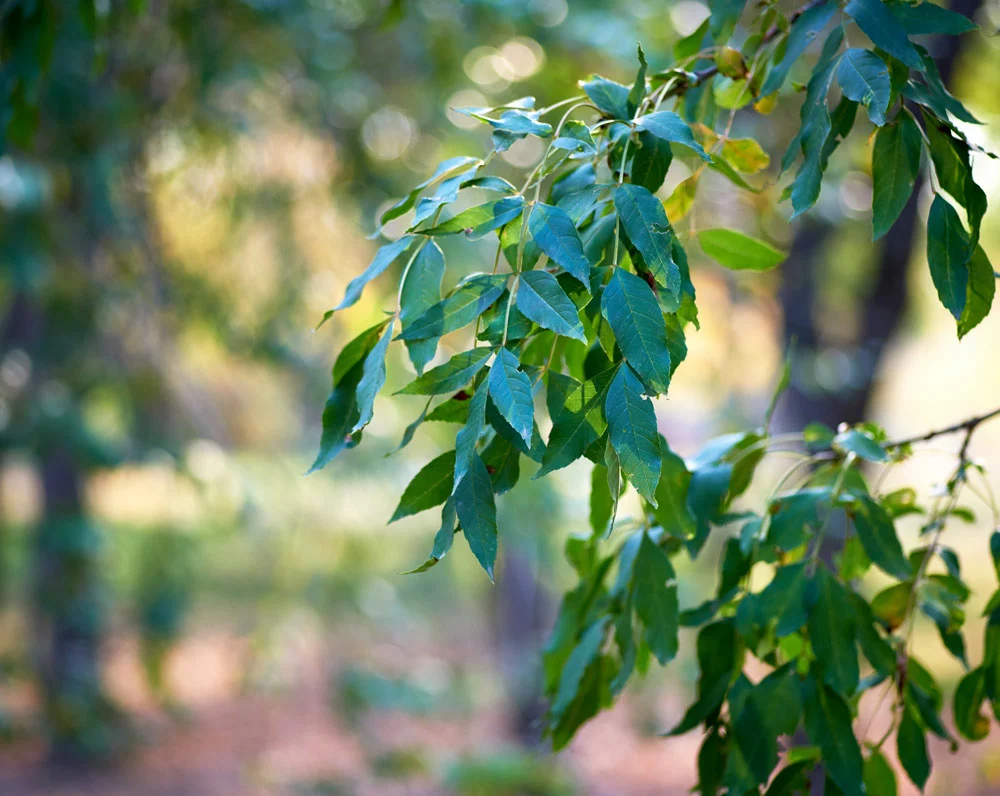
Fig 7: Ash Tree Leaves
You can identify Ash primarily from the grains, color, and bark. First, note that its end grains are not remarkably distinctive. Also, the tree’s bark features large parallel ridges. Regarding color, Ash features light-white or brown color throughout its wood.
You can also identify Ash from its leaves. It features opposite-compound leaves.
Conclusion
Ash is an exemplary firewood tree thanks to its easy splitting, fast drying, and high heat output. It is also low to moderately difficult to split. If you have any questions, feel free to contact us.
